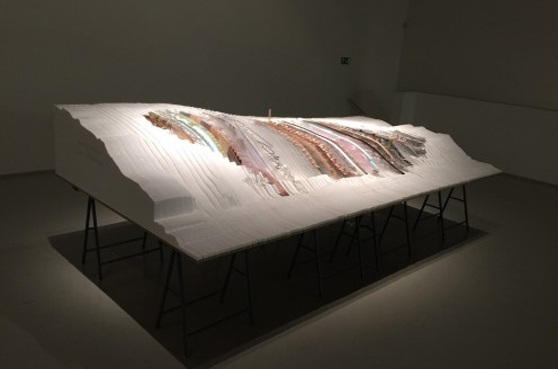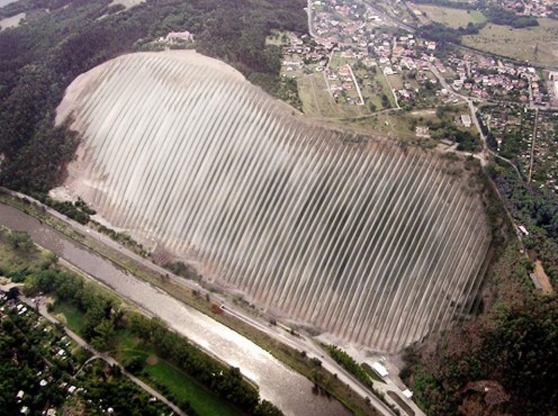
In DOXu, there is a model of a utopian city designed by students
 |
| photo: dox.cz |
Prague - The experimental project by architecture students who created the parallel membrane city Urbo Kune is presented in a new exhibition at the DOX center. Models of the divided utopian city respond to the more than one-kilometer-long exhumed quarry in Zbraslav. The exhibition also showcases paintings by Pavel Růta, inspired by various parts of the fictional city, and introduces the eponymous book by Miloš Urban. It was created as part of the project, and around 5000 copies were sold within a month.
The city Urbo Kune (in Esperanto, a common city) is inspired by the idea of "composed urbanism" by Austrian architecture theorist Jan Tabor, involving a number of artists, theorists, philosophers, architects, and musicians in its project. The city is not designed based on regulations and typologies, but is composed based on scores similarly to music, said architect Petr Hájek, under whose supervision students from the Faculty of Architecture at Czech Technical University in Prague and the Academy of Fine Arts in Bratislava created the model over two years as their semester project.
"Currently, we are dealing with the conflict between the city and the landscape with the students; we are asking ourselves how to define their boundary. The membrane city project seeks ways to revitalize a landscape destroyed by industry and to heal its scars," Hájek says.
The utopian city for 30,000 inhabitants was designed for the mining pit of the quarry. It was divided into several corridors of varying lengths, each 11 meters wide. Students designed residential neighborhoods, educational and cultural spaces, gardens, shops, cemeteries, but also a ski jump, skate park, cannabis plantation, brewery, public house, and prison in various parts. The design of the entire city is documented in a catalog available at www.membranecity.eu.
Miloš Urban was asked to come up with a fictional story about the city. The author states that the novel is the first work he began to write "to commission"; however, after completing it, he perceives it as a distinct work. In his novel, a librarian is called to the city to build a public library. However, he does not easily adapt to Urban and feels increasingly that the city, built with visions of glory and then never awakened and never utilized for its intended purpose, lives its own secret life, of which society and the state have no inkling.
According to Hájek, the structure of the city model will also serve as a score, which Kristýna Lhotáková and Ladislav Soukup will set to music. Urbo Kune particularly highlights the connection of architecture, urbanism, visual arts, film, music, and theater, which do not stand next to each other, but complement each other.
 |
| photo: dox.cz |
The English translation is powered by AI tool. Switch to Czech to view the original text source.
0 comments
add comment









